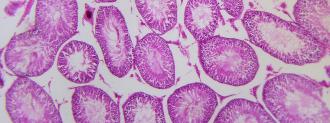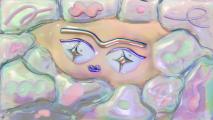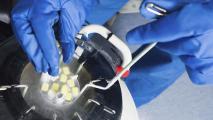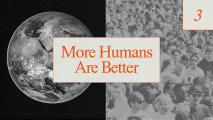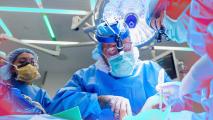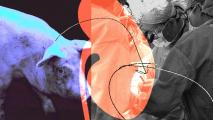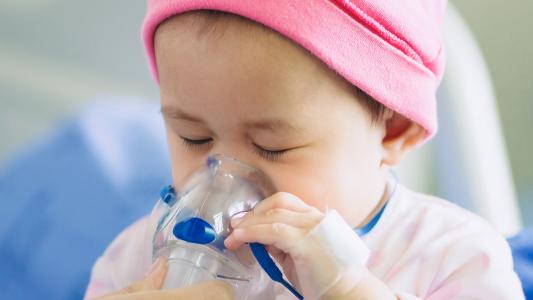An experimental procedure that used frozen testicular tissue to restore fertility in animals is heading to clinical trials — and if it works as hoped, it could help the 30% of childhood cancer survivors who are left infertile by treatment have babies of their own.
“Our protocol has been approved by the ethical committee, and now we are waiting for the first case,” Ellen Goossens at the Free University in Brussels (VUB) told New Scientist. “It can be expected in the near future.”
The challenge: Chemotherapy, radiotherapy, and other cancer treatments can cause infertility, so some patients will choose to freeze their sperm prior to beginning treatment. They can then use the frozen specimens if they decide to have children in the future.
“[Childhood cancer patients] sometimes have long-term chronic side effects of the treatments that enabled them to survive to adulthood.”
Michael Hsieh
That’s not an option for pre-pubescent cancer patients, though, as their bodies haven’t started producing sperm yet.
“A somewhat unanticipated consequence of us getting better at treating childhood cancers is that these patients sometimes, unfortunately, have long-term chronic side effects of the treatments that enabled them to survive to adulthood,” Michael Hsieh, a urologist at Children’s National Health System, told Freethink in 2019. “Infertility is one of the major ones.”
Testicular tissue banking: Childhood cancer patients might not have sperm yet, but their testicular tissue does contain the spermatogonial stem cells (SSCs) that will evolve to produce sperm post-puberty.
In 1994, researchers showed that transplanting SSCs from a fertile mouse into an infertile one gave it the ability to produce offspring.
This led to the idea that it might one day be possible to restore fertility in childhood cancer patients by removing a bit of a testicular tissue prior to treatment and reimplanting it once they were an adult.
About 30% of childhood cancer survivors are left infertile by treatment.
The tissue could then be removed months later, and any sperm produced within it could be used to create a baby through in vitro fertilization. If the tissue was implanted inside the tubes of the testes, it might even be able to restore fertility without the need for IVF.
In 2002, UZ Brussels — the university hospital of the VUB — started offering testicular tissue banking to the parents of young cancer patients. Clinics across the globe followed suit, and as of 2019, samples had been collected from more than 1,000 patients.
However, nothing has been done with those samples because we don’t know whether they can actually be used to restore fertility in people — yet.
UZ Brussels has been given the green light to trial the experimental procedure in humans.
What’s new: In 2019, a University of Pittsburgh-led team announced that testicular tissue implanted into a castrated monkey had produced sperm, and that they’d used that sperm to fertilize an egg that resulted in the birth of a monkey — a world’s first.
We’re now on the cusp of seeing if the procedure works in people as UZ Brussels has been given the regulatory green light to launch a clinical trial.
“Since we were the first worldwide to offer testicular tissue banking to prepubescent boys, we now have the oldest cohort, including patients in their mid-twenties,” Goossens told New Scientist.
The cold water: Even if the procedure works as hoped, it likely wouldn’t be recommended for all childhood cancer survivors.
Those who had testicular cancer, for example, wouldn’t want to reintroduce testicular tissue that could contain cancer cells after they’ve successfully completed treatment. Same for people who’d overcome blood cancers.
However, the procedure could give many others — such as people who had solid tumors that didn’t spread to their testicles — a way to have biological children.
We’d love to hear from you! If you have a comment about this article or if you have a tip for a future Freethink story, please email us at [email protected].
